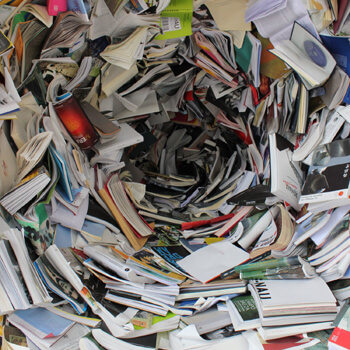Clearing clutter!

When trying to clear clutter, categorize items into four groups - those to keep, donate, discard and reevaluate. Take 15 seconds to evaluate each item.
Elissa Klein, Outreach Program Manager, CHA PACE.
Recently, the CHA Program of All-Inclusive Care for the Elderly (PACE) staff had the opportunity to participate in a training led by Eileen Dacey, MSW, LCSW, from the North Shore Center for Hoarding and Cluttering. We learned a tremendous amount from Eileen and wanted to share some of this information with our patients and the community.
There is a distinction between the clutter that many of us have in our homes and the challenges of folks with hoarding disorders. The prevalence of this anxiety disorder is roughly one out of every twenty people in the United States or 2-6% of the population, according to the American Psychiatric Association. Below are some distinctions between collecting, clutter, and hoarding which can help to identify early warning signs in friends and loved ones. After that, we have some tips to clear clutter.
In general, collectors have a sense of pride about their possessions and they experience joy in displaying and talking about them. They usually feel satisfaction when adding to it and budget their time and money. There is an inherent value to the collection.
What are the characteristics of someone with a hoarding disorder?
- Holding onto an excessive amount of possessions with difficulty discarding them.
- A need to save items regardless of value.
- Items interfere with living spaces - rooms become crowded and at times unsafe.
- Clutter causes distress, linked to parting with items and problems with daily living.
- Items that may lead to hoarding include magazines, newspapers, mail, coupons, photos, clothes, furniture, boxes and bags.
- Animal hoarding transcends simply owning or caring for more than the typical number of pets and affects every community in the United States.
Here are a few tips for clearing clutter.
- Harm reduction is the first priority. Clear exits, paths and stairs. Ensure that smoke detectors and sprinklers are working and that all appliances are unobstructed.
- Identify, sort and discard trash, recyclables, and returnables such as plastic bottles and cans.
- Target one area and one item at a time when trying to declutter.
- Categorize items into four different groups - those to keep, donate, discard and reevaluate. Take 15 seconds to evaluate each item.
- Follow-through on organizing and maintain the improved space on a regular basis
Do you know someone 55+ who needs extra support to stay healthy in their home and community? The Cambridge Health Alliance PACE program provides the health care and social support that older adults need.
Here are several additional resources:
Disclaimer
This articles provide general information for educational purposes only. The information provided in this article, or through linkages to other sites, is not a substitute for medical or professional care, and you should not use the information in place of a visit, call consultation or the advice of your physician or other healthcare provider.